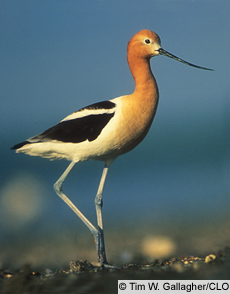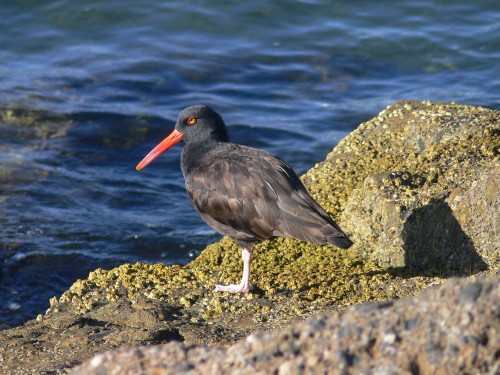 Photo: Roy LoweWe love birds. They’re beautiful. They do really cool things like building elaborate nests — without thumbs! And they can fly. What’s cooler than flying? Okay, maybe X-ray vision, but still. We love birds. Which is why we were stricken — though not surprised — by the recent State of the Birds [PDF] report from Cornell University’s famed Ornithology Lab.
Photo: Roy LoweWe love birds. They’re beautiful. They do really cool things like building elaborate nests — without thumbs! And they can fly. What’s cooler than flying? Okay, maybe X-ray vision, but still. We love birds. Which is why we were stricken — though not surprised — by the recent State of the Birds [PDF] report from Cornell University’s famed Ornithology Lab.
If we may summarize, the state of our feathered friends is: sorry. Climate change-related pollution, rising sea temperatures and sea levels and more threaten many of America’s 800 avian species. The prospects are especially dreary for Hawaiian island species and for sea birds like the albatross. The future doesn’t look too rosy for coastal shorebirds, forest birds, or arctic and alpine dwellers either. Oy.
Anyway, we’ve assembled photos of some of the most threatened species as a way to remind us of what we’ll be missing if we succeed in driving them all to extinction.
Canvasback Duck
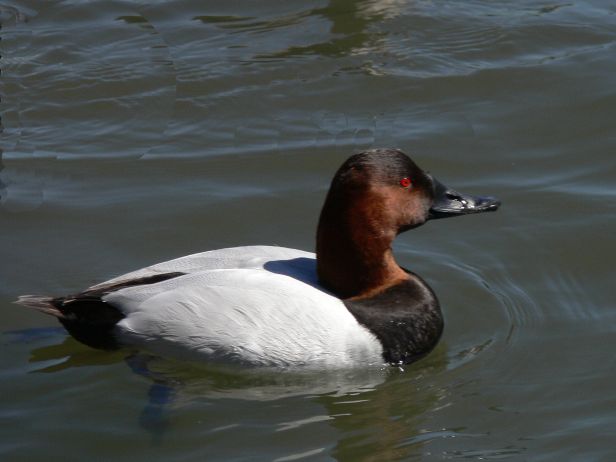 Photo courtesy of Jack Jeffrey
Photo courtesy of Jack Jeffrey
This handsome migrator has a taste for wild celery and a distinctive sloping profile the envy of other, less slopeful ducks. He summers and sluts around as far north as Alaska, where he really can see Russia on a clear day. In the winter, he rehabs from his bacchanalian interlude in the Betty Ford of bird habitats: U.S. coastal blue states and in the Mexican sun. Hang in there, Canvasback, we love your style.
King Rail
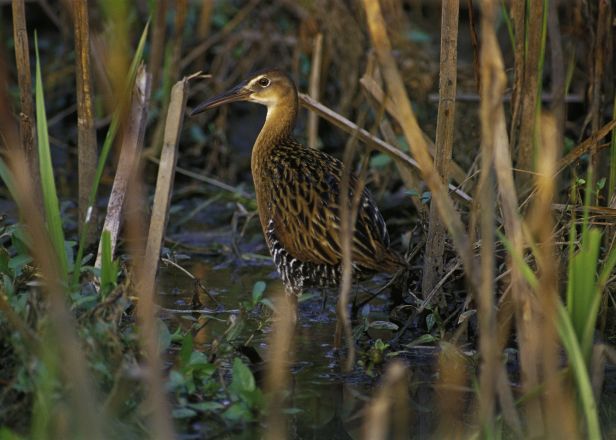 Photo courtesy of USFWS
Photo courtesy of USFWS
This consummate romantic lives up to his French name (Rale elegant) by wooing his intended with food, the Creole food of his Gulf Coast habitat, mais oui. One legendary overachiever caught seven crayfish in two hours and fed five of them to his mate. He totally got laid.
Sadly, disappearing wetlands are disappearing the King Rail, though he is holding on in the swamps of Louisiana and Florida. The adult King Rail molts completely after nesting and is flightless for nearly a month. Here’s hoping we can keep him flying the rest of the time.
Akohekohe
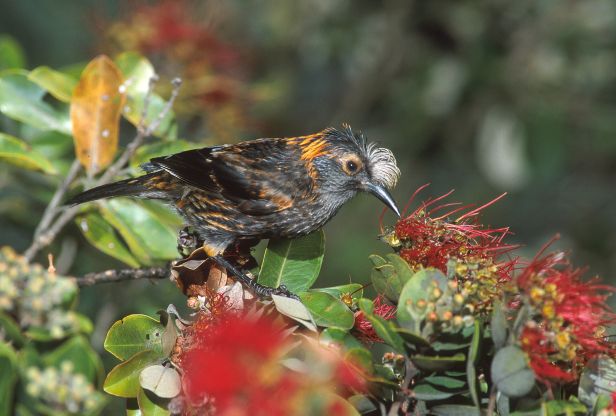 Photo courtesy of Jack Jeffrey
Photo courtesy of Jack Jeffrey
Location. Location. Location. You’ll get rainforest canopy permanently shrouded in clouds and mist, situated precisely between 5,000 and 7,900 feet, and bathed in up to 275 inches of rain per year. That’s the good news if you’re a flashy nectar forager on the northeastern slope of Maui’s Haleakala Volacano. The bad news? Mosquitos are out to get you with their avian flu germs and the damn feral pigs are destroying your neighborhood from below.
Akohekohe’s are tough birds, however, hanging out on the endangered list since 1967. Loud, aggressive, dare we say, bossy, they may chase away other nectar-seeking species, but they don’t turn their beaks up at caterpillars, flies, spiders, and other invertebrates. For food, that is.
You’d think that kind of flexibility would stand these birds in good stead. And yet, between climate change, the pigs, the mosquitoes and invading plant species, the Akohekohe is still just hanging on to its endangered status. Extinction is the last rung on that ladder.
Northern Bobwhite
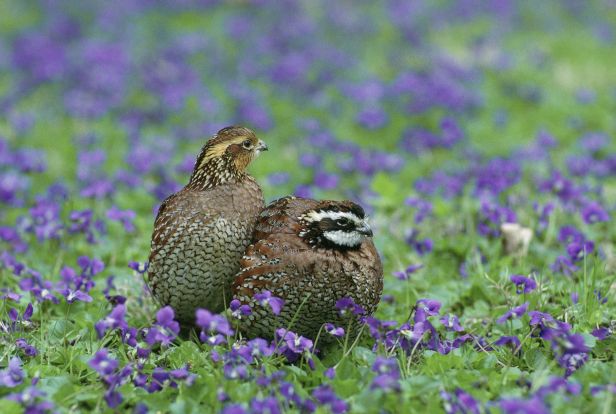 Photo courtesy of USFWS
Photo courtesy of USFWS
Here’s a little bit of advice for Mister Bob White: when you’re a popular game bird in the eastern U.S. and Mexico, do not run around loudly calling your own name. Seriously. You’re acting like our crazy Aunt Ida.
Lucky for these small, chicken-like birds, they reproduce like bunnies. When weather and habitat are friendly to them, a single pair can produce two or more broods in a single season. Impressive. Unlucky for them, habitat is a lot less friendly than it used to be.
Profligate procreators that they are, and fairly resilient to normal hunting pressure, Bobwhites can, however, be wiped out entirely.
Time to ramp up an evolutionary mutation pronto, Bob. Learn to shut yer trap.
Laysan Duck
 Photo courtesy of Roy Lowe
Photo courtesy of Roy Lowe
Talk about your close calls. This duck lives on one small island in Hawaii , the one you’ve never heard about. At one point its survival rested on a single surviving female: a nocturnal, sedentary girl who eats almost exclusively brine flies, which are themselves highly susceptible to drought.
You think this movie ends badly, and it still could. But for now, if you find yourself on Laysan Island and see a small duck, at night, rooting around a supersaline lake, you can bet dollars to donuts it’s a Laysan. The female quacks and the male whistles, in case you’re curious.
And there are a few more where that one came from. An ‘insurance’ population on Midway reduces the chance of a catastrophic event wiping out the entire species, since it is unlikely that a disaster would strike two islands simultaneously. We’ll keep our fingers crossed.
Black Oystercatcher
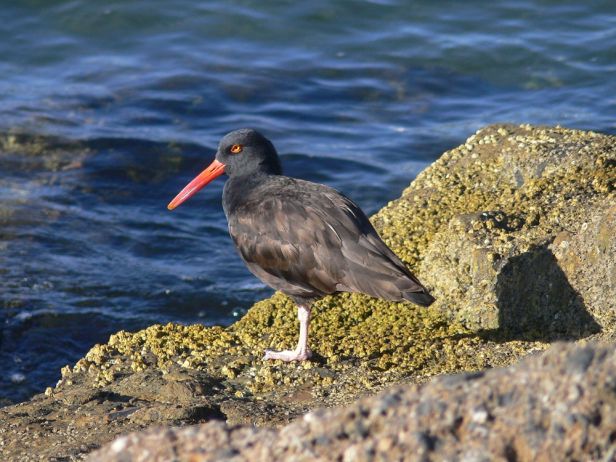
The way we see it, if you’re gonna have a big nose, make it flaming orange and put it too good use. The Cyranos of the bird world, black oystercatchers use their signature beaks to hammer or pry open their favorite bivalves — mussels, limpets, whelks and the eponymous oysters, but only rarely.
Stocky oystercatchers prowl rocky coastlines from southern Alaska to Baja, California on their pale pink legs. But those legs won’t be long enough if, as expected, climate change raises sea levels and submerges the bird’s natural foraging and breeding grounds.
Ptarmigan
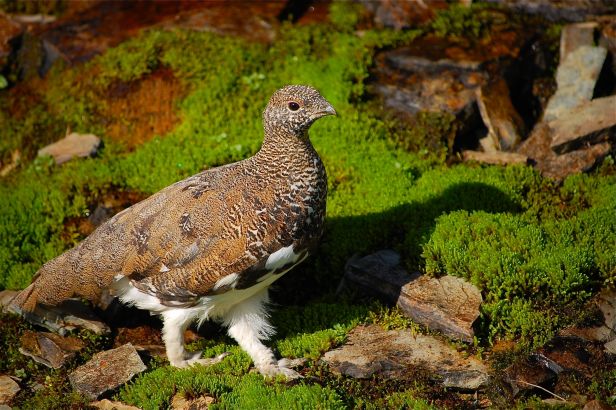 Photo courtesy of David Benson
Photo courtesy of David Benson
Life’s a bitch in the krummholz, especially in winter. The krummholz, as we all know, is an unforgiving alpine zone where the white-tailed ptarmigan makes its home. With feathered toes, camo plumage and a really sedentary lifestyle doth the ptarmigan survive the krummi winters. (It inhabits alpine regions from Alaska to New Mexico.)
But warmer weather associated with climate change threatens the krummholz and other alpine regions and thus our white-tailed ptarmigan.
Number one energy-saving tip from this smallest member of the grouse family which, btw, poops about 50 times a night: avoid flying.
Black-footed Albatross
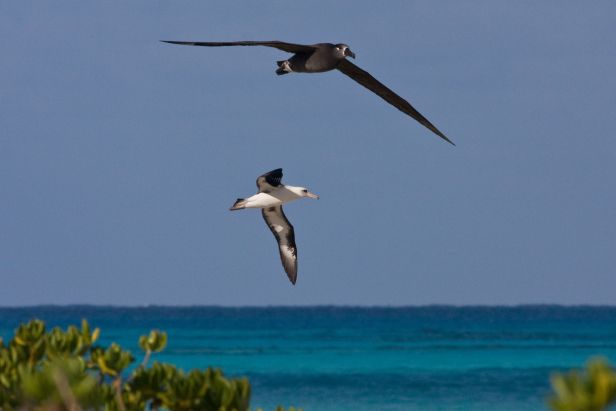 A black-footed Albatross soars above another bird. Photo courtesy of Eric VanderWerf
A black-footed Albatross soars above another bird. Photo courtesy of Eric VanderWerf
The black-footed albatross is a very large seagoing bird that hails from the Hawaiian Islands. “From” is the key word there, because albatrosses spend most of their time at sea. Pairs mate for life, even though they only see each other some two months out of every year. Talk about fidelity.
At aloha time, adults head back to the great briny, where they sniff out (literally) their fav food: flying fish eggs. The pelagic albatross drinks sea water and cries out the excess salt through glands in its eyes. Their greatest enemy is marine pollution and drift nets, which trap and kill hundreds each year.
Avocet
 Photo courtesy of John Bedell
Photo courtesy of John Bedell
With a buff-colored neck (at breeding time), long legs, a graceful upward sweep to its bill, and a bundle of eccentricities, the avocet is all Hollywood. These birds can change the pitch of their calls to make it seem like they’re moving a lot faster than they really are. When faced with a predator, some avocets extend their wings and teeter towards the bad guy like they’re tightrope walking. All those zany tricks may not save the avocet, however. It wades the shallows of marshy wetlands that are fast disappearing before the great bulldozer of human development.
